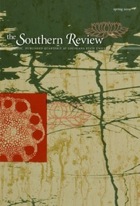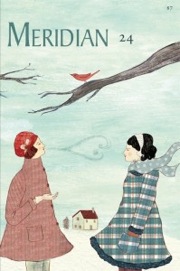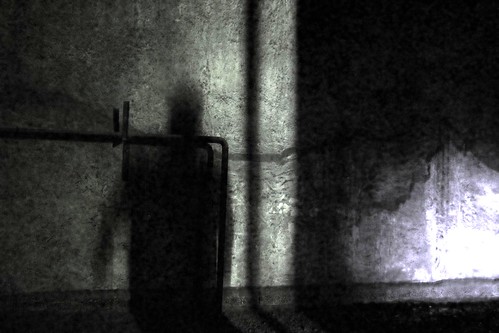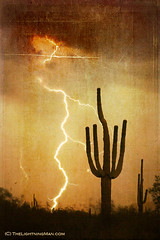On an airplane with Urban Waite’s debut novel, The Terror of Living (Little, Brown), I imagined the passengers to either side of me would be scandalized if they knew what I was reading. It’s hard to imagine a more attentive approach to the description of bullet holes, torture, heroin mules, a woman thrown from a cliff, cutlery turned to weaponry, or unyielding pursuits by boat and by horse. One image has been especially hard to shake: a scene in which the protagonist discovers a body so recently dead that snow falling on its skin still melts from the warmth. On Little, Brown’s advance reading copy of the novel, Tom Franklin compares it to No Country for Old Men. It’s a fitting choice. Waite’s fiction resembles the book not only in its lyrical brutality, but also in the way that it balances psychological complexity alongside a plot dripping with suspense.
The story follows Phil Hunt, a drug runner, and Bobby Drake, a deputy who prevents one of Hunt’s deliveries from crossing over the Canadian border. The botch leads Hunt’s suppliers to unleash an assassin to dispatch him, giving rise to a sequence of the characters alternately evading and hunting one another. In each section, the cast moves through different Northwest locales, the depiction of which is one of Waite’s strong suits. Waite grew up in the shadow of Washington’s Cascade Mountains, and he infuses The Terror of Living with a brooding sense of his home landscape, a setting that deepens our connection to the characters at the same time that it furnishes a vivid stage for Waite’s brand of carnage.
 In contrast to the savagery of The Terror of Living, it’s difficult to name a friendlier person than Waite. We first met as MFA students at Emerson College in 2005, a time when he spent five nights a week as a waiter, and two nights a week in class. Even with the busy schedule, he always found a moment to chew the fat about writing after workshop, over drinks. From his stories, and the way he spoke about them, it was clear early on that Waite was headed for big things. As soon as I learned that he’d sold his book in 2009, I contacted him to arrange an email interview. As always, it was a pleasure to catch up.
In contrast to the savagery of The Terror of Living, it’s difficult to name a friendlier person than Waite. We first met as MFA students at Emerson College in 2005, a time when he spent five nights a week as a waiter, and two nights a week in class. Even with the busy schedule, he always found a moment to chew the fat about writing after workshop, over drinks. From his stories, and the way he spoke about them, it was clear early on that Waite was headed for big things. As soon as I learned that he’d sold his book in 2009, I contacted him to arrange an email interview. As always, it was a pleasure to catch up.
Conversation
Cam Terwilliger: I read straight through The Terror of Living. Though it provides a powerful atmosphere, and a lucid view of the characters—I especially like the details of Hunt’s horse ranch—the underlying plot of the chase is so compelling that it pulled me along at breakneck speed. Simply put: will Phil Hunt escape the man hired to kill him? The jacket copy of the novel refers to the book as a “literary thriller,” and I was wondering if you could talk a little about how you’ve balanced a page-turning plot with your literary sensibility?
Urban Waite: This sounds horrible to say, but I’m not really one of those readers who picks up a book and then must finish at any cost. I pick up books all the time, read the first fifty pages or so, and then just put them down. If the characters or their situation hasn’t hooked me by then, it’s over.
Which is to say that when I started out writing Terror I was very much worried about how the characters and their situation would be seen by the reader. I didn’t want to be one of those authors [whose books I’d abandoned] and I wanted the reader to have as much fun, and be as attached to these characters as I was. What I hope I ended up with was a novel with the page-turning plot of a thriller, and the literary sensibility of characters sturdy enough to carry that page-turning plot all the way to its end.
 Part of that is finding the right balance. A few years back I read The Quiet American for the first time and I was hooked. I wanted to keep reading books just like that one, and characters just like those. What I realized about these characters is that each and every one of them has something they want, and some sort of belief system behind those desires that guides them forward through the narrative. Those beliefs might not be my own, but the power of them comes from that character’s conviction that what they are attempting is the right and pure choice.
Part of that is finding the right balance. A few years back I read The Quiet American for the first time and I was hooked. I wanted to keep reading books just like that one, and characters just like those. What I realized about these characters is that each and every one of them has something they want, and some sort of belief system behind those desires that guides them forward through the narrative. Those beliefs might not be my own, but the power of them comes from that character’s conviction that what they are attempting is the right and pure choice.
It seems too simple to put it this way, but all good characters in my mind are in a way selfish beings. They move and act in their own best interest, both internally and externally. They are guided by things like loneliness, pride, hurt, revenge, shame, and countless other parts of the human situation we all live with everyday. It’s identifying and cultivating those traits in the novel that I think makes worthwhile characters, because characters are just like us, they aren’t two dimensional, there’s a lot going on under the surface that we don’t see, but then in the process of writing becomes the challenge. This I think is at the heart of the literary narrative. While on the other hand, the thriller, page turning aspect of things is more about what is going on beyond the character, what the character is directly running up against, colliding with, and often trying to survive.
What are some books that have grabbed and kept your attention?
 I always keep a few of my favorite books within reach on the desk. Raymond Carver’s Where I’m Calling From, John Casey’s Spartina, Poachers by Tom Franklin, Rock Springs by Richard Ford, and Graham Greene’s The Power and the Glory. Those are the ones on the desk but I’ve read a few others that affected me more recently. I really liked Matterhorn by Karl Marlantes, The Bone People by Keri Hulme, and most recently Skip Horack’s The Eden Hunter, reminded me a little of Blood Meridian by Cormac McCarthy–another favorite of mine.
I always keep a few of my favorite books within reach on the desk. Raymond Carver’s Where I’m Calling From, John Casey’s Spartina, Poachers by Tom Franklin, Rock Springs by Richard Ford, and Graham Greene’s The Power and the Glory. Those are the ones on the desk but I’ve read a few others that affected me more recently. I really liked Matterhorn by Karl Marlantes, The Bone People by Keri Hulme, and most recently Skip Horack’s The Eden Hunter, reminded me a little of Blood Meridian by Cormac McCarthy–another favorite of mine.
Primarily it’s the books I keep close at hand that I tend to go to for advice. But sometimes I’ll seek others out. I read Dog Soldiers and No Country for Old Men while I was revising Terror and took a lot of help from both. Looking to Dog Soldiers for crazy dialogue and No Country for pace.
The novel switches point of view often, most notably between Hunt and Drake, but also their wives, the assassin, and a few other minor characters. When did you know that cycling POV would be required by the novel, and what effect do you feel it produces?
There are three main characters in the book, Hunt, Drake and Grady Fisher, the assassin. I feel naïve saying this, but when I started out writing Terror I thought I’d just give them each a chapter, and cycle through all the way to the end. It seemed like a good plan at the time, but it never worked out.
What ended up happening with this plan was that after I finished one chapter I always needed to go back in time to begin the next. It felt to me like I was continuously restating facts that I’d already written in the previous chapters, so that by the time I got to the end of the three-chapter cycle I was quite bored with what I was doing. No new ground was being covered and the characters were going places that I’d already said they were going a couple chapters before.
So I guess probably out of frustration (which is really where all writing comes from) I started to break things up. I wanted the characters and their individual plot lines to move, I wanted them to circle each other and move in on each other in an almost predatory way. In this way the link between them became much stronger than I ever could have done with chapters, because when one character makes a move, the others are forced to make counter moves and this, I think, makes them not individual characters but something much bigger and stronger than what they ever could have been alone.
The joy of doing the novel this way allowed me to free up the narrative quite a bit. Instead of just having three characters that would predictably tell their story, I was able to more—with this shifting sense of POV— easily insert characters that weren’t exactly the main focus, but still deserved a voice in the novel. And in this way I was also able to shift the lens a little and show the main characters from another perspective, further filling in the scope of their individual personas, and the surroundings in which they needed to exist.
At Emerson, you were working predominantly on short stories, and you’ve had some great work published by lit mags like The Southern Review, West Branch, Hayden’s Ferry and a number of others. Was it difficult to shift gears into the scope of a novel? Or was it a relief to have a larger canvas to work with? Did this novel, in any regard, grow out of the stories?
There’s a character in Terror that appeared previously in four or five of my short stories. He’s not a main character by any means, but he’s still a pivotal one in both the stories and the novel. I can’t say why I brought Eddie Vasquez out of the story world and let him roam the pages of the novel. I don’t even know if Eddie is the same character at all, more like a brother of sorts, someone who comes from the same roots, appears much the same, but isn’t the same at all.
 Certainly there’s something to be said for him, or rather, there’s something to be said for what he’s doing in both my stories and my novel. He was written in from the start as a way for me to get going on a certain scene, and he just kind of stayed. I always thought that I’d replace him, switch out the name, but I think I just liked having a familiar face around in this new world of the novel. So that when the book finally felt like it was finished I couldn’t do it, the role of Eddie was Eddie’s and I knew that if I changed his name it would never feel right.
Certainly there’s something to be said for him, or rather, there’s something to be said for what he’s doing in both my stories and my novel. He was written in from the start as a way for me to get going on a certain scene, and he just kind of stayed. I always thought that I’d replace him, switch out the name, but I think I just liked having a familiar face around in this new world of the novel. So that when the book finally felt like it was finished I couldn’t do it, the role of Eddie was Eddie’s and I knew that if I changed his name it would never feel right.
All this is just a way of saying that, yes, it was a tough start at first. I was used to working in the world of a few thousand words and now I had stepped past that and was attempting a project in the tens of thousands. Much bigger than anything I’d ever done before.
In this way Eddie was informing what I was writing, helping to bridge the gap between story and novel. I’m a huge story fan. I think I always will be, and one of the things I’ve always noticed about the story collections that I love the most are that each and every one of those stories in those individual collections speak to each other. They all share some link in theme or mood. The parts making up the whole, until, like a novel, they have formed a world unto themselves. I don’t know if I see much of the distinction between story and novel. They’re both just a means to an end. A reason to keep writing and exploring those themes that move us, even as they go from the brevity of a story to the expanse of a novel.
The two protagonists in The Terror of Living both have the burden of the past weighing on them: Hunt in the form of his time spent in prison, and Drake in the form of his father’s career as a drug runner. What attracts you to characters living in this kind of shadow?
I’m sort of obsessed with the idea of the past dictating the present. I find it fascinating that much of what we do is based on what we’ve done. For me characters like this and people in general aren’t necessarily who they appear to be just based on their past actions, or the actions that may have befallen them.
This is getting back into the idea of character and what makes up a good character, and one that is worthy of being followed through something the length of a novel. For the most part I think when I throw around terms like ex-con and sheriff’s deputy, characters like Hunt and Drake in this novel, I am drawing on a certain stereotype currently at large in the collective mind. What I like about the shadows these two live behind is that, as the writer, I am trying to break them out. I’m trying to surprise the reader and show that these characters aren’t just these labels, that through the conflict of the novel they become much more than the archetypes they seem to us at the beginning.
The landscape of Washington near the Canadian border not only plays a concrete role in the plot (i.e. running drugs via its mountains or waterways), but it’s also linked to our understanding of the characters. You grew up in this area. In what ways do the place and its culture inform the way you write?
You know, I lived five or six years on the East Coast and on any one of those days I could have told you what the weather was doing out in the Northwest, or what time the sun would go down. It’s kind of a strange thing at times, but when you grow up in a place, that place becomes part of you, and in a way defines who you are.
I worry sometimes that maybe I’m losing my grasp on this place, that maybe the stories I’m trying to tell aren’t the stories of the people who now populate the city I grew up in. I’m thirty years old and it sounds strange to say but I feel like a whole lifetime has gone by and now I’m living another. The blue-collar Boeing family is gone, replaced by the white-collar version from Microsoft. And I’ve noticed the more the city grows, and the higher the buildings get, the more my eye shifts away and starts looking to the outskirts. Because—at least in my mind—the stories on the outskirts are now the stories that seem the most familiar to me.
Can you describe collaborating with Nat Sobel, your agent, on The Terror of Living? Did you work with him to develop the concept of the novel? To revise it? What was it like to be involved with someone who’s had such an important and longstanding position in the publishing world?
It’s funny for me now to go back and think about this because Nat really had no idea what I was writing. We’d talked a little about it, but not much, and it kind of goes without saying in the writing community that once you start talking about a project while you’re in the middle of it, there’s pretty much no hope for you or the project. With that in mind, I began with a whole lot of ideas on what I wanted to write, but absolutely no one to talk to.
When I came back and handed about two thirds of the project over to Nat it took him by surprise, because I think he was expecting something like my stories, which are certainly in the same vein, but also much quieter than Terror.
 The truth about having Nat as my agent is that I’m very lucky. I wouldn’t have Terror without Nat. He found me in the lit journal, Meridian, and contacted me out of the blue about the story I’d placed there. Which got us talking in general terms about this project of the novel, something I really didn’t have the first clue about. And so when I turned the novel in to Nat, and it happened to be a literary thriller, Nat was the perfect guy for the job.
The truth about having Nat as my agent is that I’m very lucky. I wouldn’t have Terror without Nat. He found me in the lit journal, Meridian, and contacted me out of the blue about the story I’d placed there. Which got us talking in general terms about this project of the novel, something I really didn’t have the first clue about. And so when I turned the novel in to Nat, and it happened to be a literary thriller, Nat was the perfect guy for the job.
And this is where I feel the most fortunate to have Nat as an agent, because in all honesty he’s a great editor. He’s worked with writers like James Ellroy, Richard Russo, and Tom Franklin, among others. When he gives you advice, you know that it’s coming from this deep place of understanding for what it takes to be a good writer, and the steps it takes to get there.
I like to say that I wrote the novel in a month, writing ten pages a day for thirty days, but this is really just a small part of the whole process. The novel I turned in to Nat certainly isn’t the novel it is today. It’s better now. Much better. The skeleton was there but the flesh of the thing didn’t come until later, and it came through help from Nat and everyone at Sobel Weber.
For the next nine months or so before the novel sold here in the states and then went on to Frankfurt, we went through probably ten or fifteen edits, starting out with the larger ideas like character and plot, and slowly—after feeling like those were settled—moved on to things like sentence structure and punctuation. The goal being to get the novel into the best shape possible.
While you were working on the first draft of this novel you spent some time at the Vermont Studio Center, an artist colony in northern Vermont. What was it like to have that much time alone to work? Was it overwhelming? Was it necessary to the project? What was an average day like while you were working on the draft?
I went into the Vermont Studio Center with a big project on my hands. The plan, if that was what it could be called, was to write ten pages a day until I had a book. I had nothing going in, except the idea of these two smugglers climbing a ridge by horseback and opening with that as the beginning. Part of what helped me through that month was that I never really knew where they’d be from one day to the next. I wrote my ten pages everyday, made a few quick notes for the next day and then just shut the computer down. It was a nice way to do things and many times I left my writing studio at the end of the day feeling pretty good about what I’d written, and then at other times feeling pretty horrible. But that was the thing about having that time, I was free to mess up, then go back the next day and either cut, clip, or revise what I’d written the day before. There was no one really waiting for the book. At that point, alone in the studio and hashing out the manuscript, it was really all between me and the storyline of these characters.
That being said, it was a lot of time to have for myself. More time than I’d ever had for anything really, and that alone was sort of a scary thought. All the familiar things of life that we all use to fill up our days just weren’t a factor up there, and it was quite a freeing experience. As the days added up and the page count grew I gradually developed a set schedule that worked for me, which usually started the night before with a shot of Nyquil.
Was the time up there necessary for the project? Yes, I think it was. I’d hate to think about if I hadn’t gone. I’d probably still have written Terror, but it would most likely be a completely different novel. I don’t use outlines. I absolutely hate to use them because when the outline has been written and is sitting there in front of you, the path has already been charted. I can’t use that. And I never want to go somewhere where I can see all the way to the end. There’s just no fun or adventure in that.
So I guess what I’m saying here is that up at the VSC I was able to just follow the story line all the way to its end and see where it took me, as opposed to seeing where I could take it.
In one of your author bios it says “[Urban Waite] attended the University of Washington on a partial scholarship focused on minority achievement in math and science, preparing him to be the next big Mexican/Italian/Welsh engineer. Instead, he became interested in fiction (where he could make up anything).” I was charmed by the honesty there, and wondered if you could tell us a little about how you first became hooked on fiction. Was it something you always wanted to do, but felt compelled to pursue engineering for practical reasons? Do you still maintain an interest in the sciences?
Science always made sense to me. There’s something concrete about it in a way that there isn’t in writing. I grew up reading National Geographic and wanting to be one of the people in those pages. For this reason science seemed the best route, but what I realized along the way was that I didn’t really want to be a biologist (as I’d first set out to be), I really just wanted to be someone visiting those far off places and learning about small, often isolated communities. Writing gave me a way to explore those places and the mythos that surrounds them in a much more accessible way.
As for my interest in science, I still pick up National Geographic and read through the articles just as diligently as I did growing up. The interest is still certainly there, though I think if I did get a job working for National Geographic, they’d be very dismayed at the amount I make up.
Now that The Terror of Living has hit the shelves, what’s next for you and your writing? Do you have another novel in the works, or something else? Do you feel you’ll be working in a similar vein to The Terror of Living?
Part of the reason I was able to take time out and work for the last year to focus solely on writing was because as a sort of bonus to selling Terror, I also agreed to write another book for Little, Brown. I’m not sure how closely this one will relate to Terror. The new book certainly touches some of the same subjects, but what I’ve been most interested in during the writing of this project is the relationship between good and evil. That tension is really at the heart of what I’m always writing about and what really gets me up in the morning and sits me down in front of the computer.
The novel takes place in the Southwest and feels to me a little more bare-bones than Terror. Not to say that it is somehow less than Terror, but rather that it feels scraped down and hits a little closer to the skin. Much of what I’m talking about here is the relationship these characters have to the land and what that land means to them even as the issues of border and race shift over them in a sort of never-ending storm cloud.
It’s tough to say more about this project, because I don’t want to get too far ahead of myself. I will say this though, the book feels more personal to me than Terror did, but in the sense of its ideas, rather than what is actually written on the page. I’ve finished a few drafts and every draft brings me a little closer to the way I envision the story, but it’s not there yet. I think that really what loving writing comes down to, and what drives me to keep working, is that I’m excited about what this project could be, and I’m working now to try and make that happen.
Further Links and Resources
January 8, 1927
Father,
All that’s left of the sails are tattered sheets as hard and calcified as sheep’s bones. When we speak even the moisture on our tongues is pulled up into the air. McCull is still sick. He calls out in the night, whimpers in his sleep. All of the men have moved away from him. Fights often break out over the smallest of things, a favored broken chess piece, stolen from the captain’s set, a scrap of the London Times, so worn from reading it appears nothing but filament.












